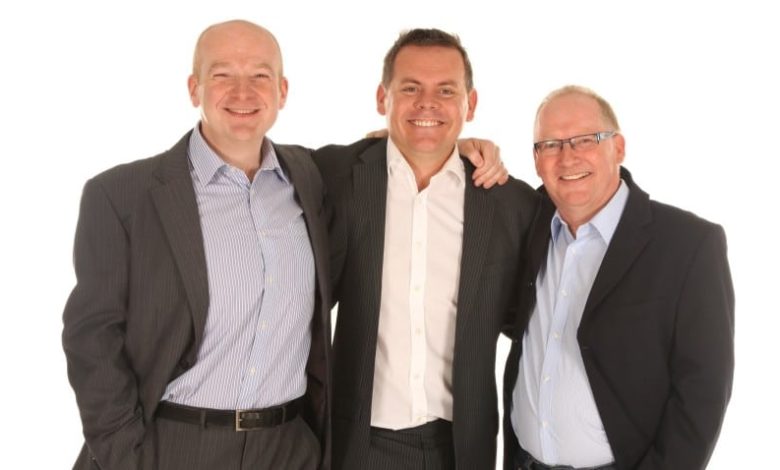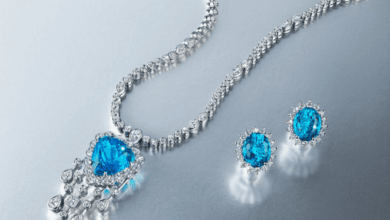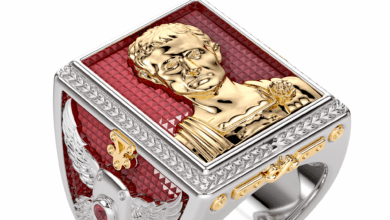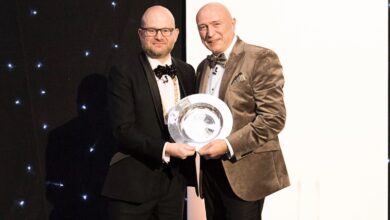FEATURE: JewelStreet.com’s Rob Passmore

Register to get 1 free article
Reveal the article below by registering for our email newsletter.
Want unlimited access? View Plans
Already have an account? Sign in
JewelStreet.com is an online jewellery shop with a twist. Founder and MD Rob Passmore insists that giving designers and manufacturers a bigger slice of the sale price is the future. First, though, he’s asking Joe Public to get it off the ground with £100,000 of crowdfunding investment. MICHAEL NORTHCOTT caught up with him to find out more.
What exactly is the business model, from the designer’s perspective?
We charge a £199 setup fee which is to build the designer’s ‘boutique’ on the website and load the products in to it with images, details and pricing. After that there’s no fees and it is free to have your shop. As orders come through, the transactions are handled by us and the orders are forwarded to the designer. We keep 25 per cent as our cut, and the remaining 75 per cent goes to the designers. If they succeed, we succeed.
When did you choose crowdfunding to get started, and why?
We chose crowdfunding about eight months ago. We are using it as a component of our seed round of investment: we want to raise £400,000 in total, and we want about a quarter or a half of that to come from crowdfunding. We like that fundraising model as we get some good publicity by doing it, and we want our designers to have a sense of ownership. Some of those who have signed up to sell their jewellery on the platform are also investors, giving it a little bit of that John Lewis feel.
What are the barriers to entry for you getting started? Do you have a USP versus other would-be etailers?
All you have to do is look at the parallels in other sectors. Airlines do not rely on travel agents like they did in the Eighties, and fashion does not rely on the high street anymore. We felt the retailers were taking an inordinate percentage of the retail price in the jewellery world, and given the rise of the internet, that isn’t sustainable. That was the motivation in doing it. Other etailers are replicating the offline model because they are taking a traditional markup instead of passing any of the saving of having fewer overheads onto the suppliers. Designers are getting pennies on the pound by joining our platform: we are connecting the brands and designers directly with the public instead of retaining an old markup structure.
How can you combat the jewellery-specific notion of customers wanting to ‘touch and feel’ expensive items before they buy them?
Jewellery is one of the last retail sectors to go online as it is a higher price point than lots of other types of product. Other expensive sectors like holidays have got around it by offering video and graphic displays on their websites to give people a better feel of what they’re purchasing. Similarly, we offer a 360-degree presentation to the designers for a slightly larger markup. Those who have used this feature are realising a 70 or 80 per cent increase in sales.
What do you make of the ‘showrooming’ phenomenon, where consumers will try something out in a shop and then retreat to make the purchase more cheaply online?
I’m a big fan of the high street but I think we need to re-invent it. I use the phrase ‘fit for purpose’. There are a lot of products and lots of people, and I don’t think we’re going to wipe anyone out if we become a successful online platform. In the same way that travel agents have had to involve into niches, independents will have to do the same thing. If I want to book a safari in Nairobi, I’ll see a niche travel agent, but for a bog standard holiday I’ll just book online. We don’t allow cheap imports on the website, but we’re going for the middle ground in terms of price, and we have over 200 boutiques signed up – it is like a street full of boutiques.
Hit us with some facts and figures about your progress so far
We attracted around 65,000 website visitors over Christmas last year; we have 250 designers on board; our team is 8-strong, growing to 14 in the next 12 months and 28 within three years. The big plans over the next 12 months include looking at the US market, and marketing to the US consumer about British design. We’ll have 300-plus designers by that point, and the Americans love Anglophile design. We have been picked up by American trade magazine JCK, and flood of American designers have been in touch as a response, so it looks as though there is a similar market to tap over there.
Who do you consider to be your competitors, if anyone?
We have more competition in Europe than we do in the UK, but still no-one is doing exactly what we’re doing. Amazon.com is starting to get very serious about jewellery, and I’m thrilled by this as it means the time has come for jewellery online. Boticca.com are leaning more towards accessories with the handbags and scarves that they sell, and anyway they seem to be more about emerging designers. Notonthehighstreet.com is probably a competitor from the gifting end.
Do you have any long term plans to bring the whole operation in house, employ your own designers and sell JewelStreet branded jewellery?
We are looking at having some designers do some exclusive work for us where we would commission the pieces and own the designs, and then present it to our online customers as ‘Spotlight’, or something like that.
What other expertise do you have in your team?
The co-directors at JewelStreet with me are Andy Jones (ex-Disney, ex-UBS, ex-PWC), and Mike Taylor, a Fellow of the Institute of Professional Goldsmiths. He’s been a goldsmith for 37 years and still owns a shop in Crowthorne in Surrey so he understands this business from all sides.
Is your plan to make your money and then exit the business, or are you passionate about jewellery?
I am growing more passionate about jewellery. But from a business perspective this is a massive opportunity and I was amazed no-one had done it. What drives me on this is the Robin Hood story – designers and artisans working at the bench to get a proper share of the value chain. We’re a very transparent organisation, and we think the consumer will win through choice, JewelStreet will win with a commercially successful platform, and the designers will win by keeping more of the sale value in their pocket.
Apart from just building a successful business, what other aims do you have for this venture?
Two. I can’t wait for the day when a consumer from America can come onto the site and go: ‘I wonder what Greek jewellery is like, I wonder what Scandinavian jewellery is like’ – allowing people to explore a range that they have never had access to. On the consumer side it is about breadth. JewelStreet should be where someone comes for £20 stud earrings all the way to a £6,000 engagement ring. In the same way as I buy books from Amazon without thinking about anything else, I want people to regard JewelStreet as an equally comprehensive service in jewellery.
Finally, should bricks-and-mortar retailers be scared of you?
I think there is space for everyone, and we cannot replicate the experience of going into a jewellers with your fiancee to choose an engagement ring, so this will remain the forte of the high street business. The truth is, our average order value is around £70, which means that it is the gifting end of the market that we will most likely occupy. But there are ways for retailers to work with us, too: if you have a workshop in a shop, then you can sell with us.







